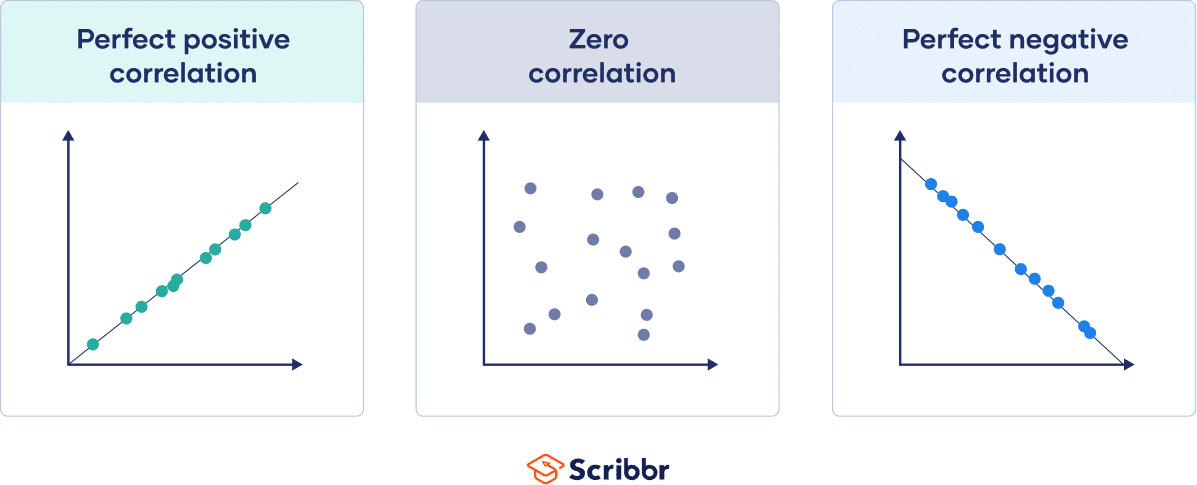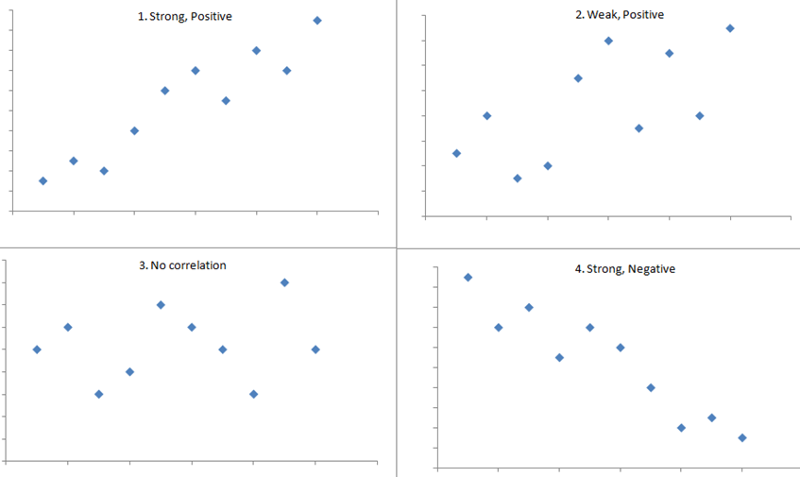What Variable Is Used When Describing Correlatin Coefficient
Basically a Pearson product-moment correlation attempts to draw a line of best fit through the data of two variables and the Pearson correlation coefficient r indicates how far away all. The most commonly used correlation coefficient is Pearsons r because it allows for strong inferences.

Pearson Product Moment Correlation Coefficient Wikipedia The Free Encyclopedia Regression Analysis Statistics Math Machine Learning Deep Learning
The closer the correlation is to -1 or 1 the stronger the relationship between the variables.

. With these scales of measurement for the data the appropriate correlation coefficient to use is Spearmans. The linear correlation coefficient is a number calculated from given data that measures the strength of the linear relationship between two variables. This is the number used to describe a correlation.
The given equation for correlation coefficient can be expressed in terms of means and expectations. Its best to use domain specific. The Pearsons correlation coefficient for these variables is 080.
The population correlation coefficient uses σ x and σ y as the population standard deviations and σ xy as the population covariance. However this rule of thumb can vary from field to field. ρ x y Pearson product-moment correlation coefficient Cov x y covariance of variables x and y σ.
Here cov is the covariance. From the regression equation we can infer if the relationship or correlation between the two variables is positive or negative from the value of the slope a positive slope Value means a. Population Correlation Coefficient Formula.
It is usually represented by ρ rho. Therefore correlations are typically written with two key numbers. R and p.
The variable used to represent correlation coefficient is. A -061 r-value is. 13 A Spearman coefficient is commonly abbreviated as ρ rho or r s Because ordinal data can also be ranked use of a Spearman coefficient is not restricted to continuous variables.
In this case maternal age is strongly correlated with parity ie. The correlation coefficent ranges from -1 to 1. The formula is given by.
Corr xx Covxxstd dev x std dev x Covariance xx is equal to variancex Variance is a measure of spread. Has a high positive correlation Table 1. But if your data do not meet all assumptions for this test youll need to use a non.
Variable x will be having the best correlation with itself. Lets understand the range of correlation coefficient. Where S x and S y are the sample standard deviations and S xy is the sample covariance.
We can call it just the correlation coefficient. The Correlation Coefficient r The sample correlation coefficient r is a measure of the closeness of association of the points in a scatter plot to a linear regression line based on those points as in the example above for accumulated saving over time. By far the most commonly used correlation coefficient is the space consuming Although the scattergram is an important statistical tool for examining relationships between two.
σX is the standard deviation of X and σY is the standard deviation of Y. Linear Correlation Coefficient. For high statistical power and accuracy its best to use the correlation coefficient thats most appropriate for your data.
Basically a Spearman coefficient is a Pearson correlation coefficient calculated with the ranks of the values of each of the 2 variables instead of their actual values. As a rule of thumb a correlation coefficient between 025 and 05 is considered to be a weak correlation between two variables. If the correlation is zero that means there is no relationship between the variables.
In negatively correlated variables the value of one increases as the value of the other decreases. Its parametric and measures linear relationships. The range of the correlation coefficient is -1 to 1.
R xy σ xy σ x σ y. Usually we can use the correlation coefficient to calculate how associated two variables. ρ XY cov XY σXσY.
A correlation coefficient is a statistical measure of the degree to which changes to the value of one variable predict change to the value of another. This correlation coefficient is a single number that measures both the strength and direction of the linear relationship between two continuous variables. The Pearson product-moment correlation coefficient or Pearson correlation coefficient for short is a measure of the strength of a linear association between two variables and is denoted by r.
Possible values of the correlation coefficient range from -1 to 1 with -1 indicating a perfectly linear negative ie. A Describe how the line of best fit and the correlation coefficient can be used to determine the correlation between the two variables on your graph. Statistical significance is indicated with a p-value.
For example a much lower correlation could be considered strong in a medical field compared to a technology field. Variance is used to describe how. So corrxx will be the best or maximum correlation.
ρ X Y E X μ x Y μ y σ x. Several formulas have been created. Ivy Wigmore Content Editor.
The closer r is to zero the weaker the linear relationship. Sample Correlation Coefficient Formula. This rule of thumb can vary from field to field.
ρ x y Cov x y σ x σ y where. Values can range from -1 to 1. For example a much lower correlation could be considered weak in a medical field compared to a technology field.
The Spearmans coefficient is 084 for this data. One of the most used ones is the Pearson Correlation Coefficient. In this article there are two methods prepared.
R xy S xy S x S y. Positive r values indicate a positive correlation where the values of. In positively correlated variables the value increases or decreases in tandem.
AVERAGE RATE OF CHANGE. Pearsons correlation coefficient is represented by the Greek letter rho ρ for the population parameter and r for a sample statistic. As a rule of thumb a correlation greater than 075 is considered to be a strong correlation between two variables.
A 098 r-value is.

Correlation Coefficient Types Formulas Examples

Research Methods Data Science Learning Social Science Research Data Science Statistics

No comments for "What Variable Is Used When Describing Correlatin Coefficient"
Post a Comment